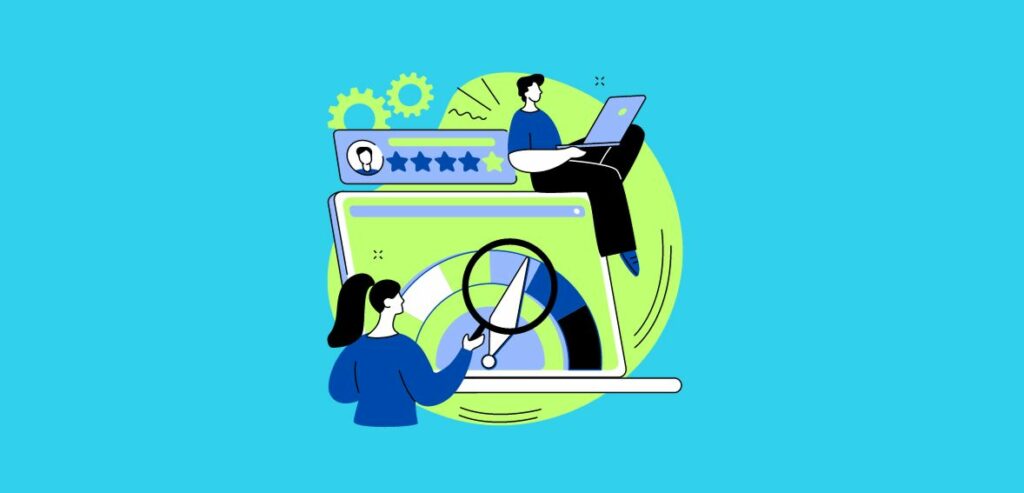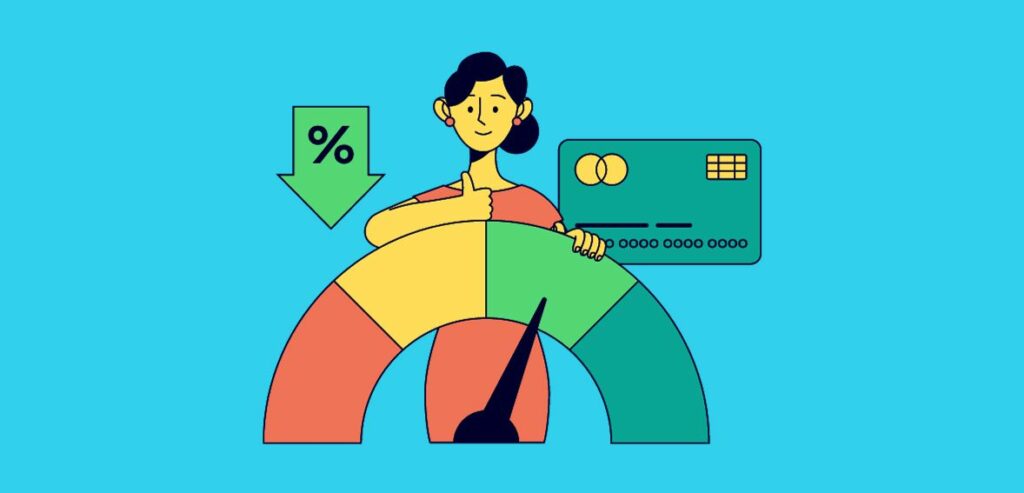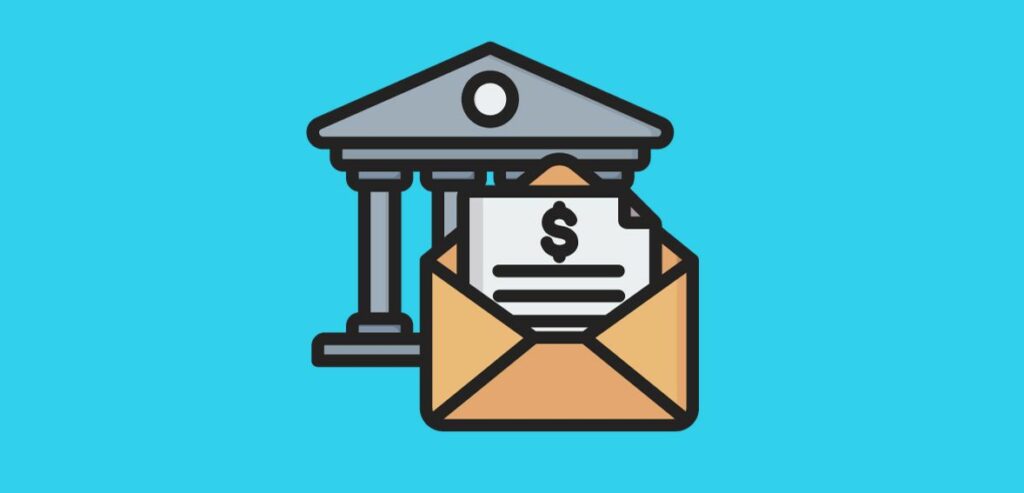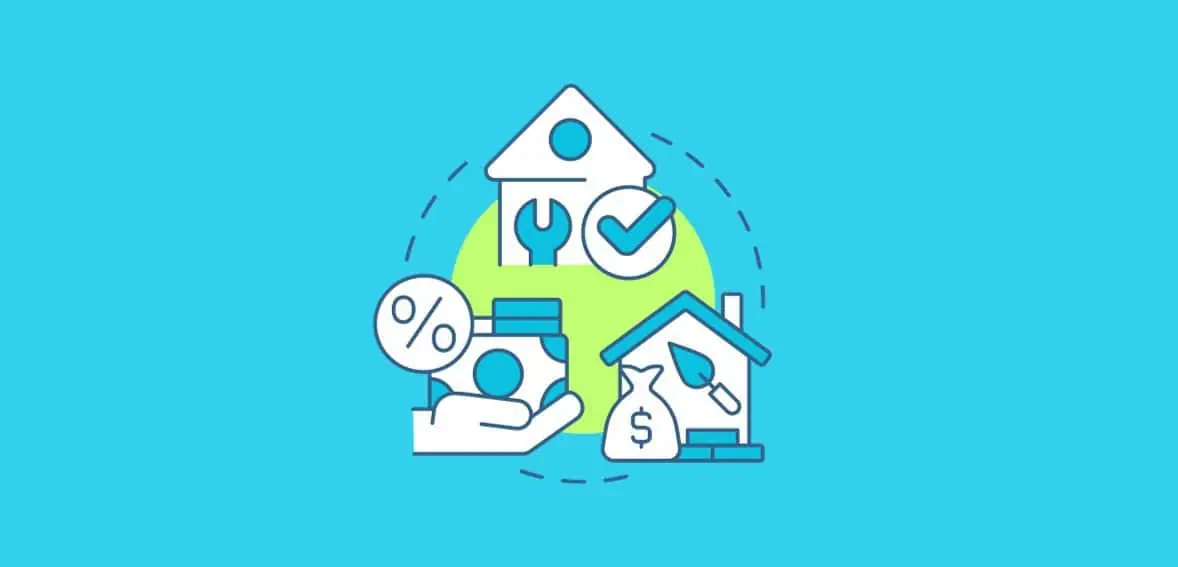An important, but often unspoken, business guideline suggests securing financing before you start facing problems in your business. Even the most successful and profitable businesses fall short sometimes, the reasons can be different like delayed invoice payments, unforeseen expenses, and short-term cash flow uncertainties. In such situations, having access to additional funds can make the difference between business closure and successfully steering through challenging times.
And applying for a loan when your business is in dire financial straits may not be the best situation to be. So what else can you do? Get a business line of credit. Opting for a business LOC could be a wise choice for almost all cash-intensive businesses. A business LOC provides access specific amount of funds in time of need, ensuring you’re prepared for unforeseen financial challenges or opportunities requiring extra capital. You can say that, it acts as insurance for unexpected situations. Business lines of credit prove beneficial in purchasing inventory, handling unexpected expenses, and managing cash flow. Moreover, you only incur interest on the amount utilized, not the entire approved credit line.
Want to know more about business line of credit? This article aims to provide a comprehensive understanding of business lines of credit.
Understanding Business Line Of Credit
A business line of credit offers a more adaptable form of financing compared to a standard small business loan. In a traditional loan, you receive a predetermined lump sum and repay it over a set period with interest, applicable only to the actively borrowed amount. As of 2023, the average interest rate for a business LOC varies between 8% and 60%. These credit lines prove useful for various short-term needs, such as covering payroll, managing cash flow, and making inventory purchases.
Diverging from a traditional or term business loan, which disburs funds all at once and is repaid with interest, a business LOC is renewable. As repayments are made, the available credit amount is refreshed, akin to managing a credit card limit. Typically approved for several months to several years, the duration depends on the lender’s terms.
How Business Line Of Credit Works?

The functioning of a business line of credit typically involves two main phases, though the specifics may vary slightly among small business lenders. These phases are the draw period and the period of repayment.
In the draw period, where the short term lasts usually between 12 weeks to one year, to a longer term which can last up to five years, you can borrow funds from the LOC up to the predetermined limit. During this period, interest accumulates on the borrowed amount. If you choose not to borrow, there won’t be any interest charges, but you might still have to pay a fee to maintain the open credit line.
Repayment of the borrowed funds can occur during the draw period, but if not, it becomes mandatory once this period concludes. Once the draw period ends, you enter the repayment phase, and further borrowing becomes unavailable on this specific credit line.
Similar to a business loan, you repay the borrowed amount in installments. It’s important to note that the interest rates on a business line of credit often fluctuate, meaning they can change during the life of the credit line. Additionally, depending on your lender, you might encounter additional fees associated with the lifetime of your credit line, such as:
- Origination Fee: At the initiation of your borrowing journey, an origination fee may come into play which is typically 0% but can go above 2% of the borrowing amount (depending on the lender). This fee is charged to facilitate the processing of your credit application, ensuring that the necessary steps are taken to set up your LOC. Understanding the implications of this fee is pivotal, as it directly influences the upfront costs associated with accessing financial resources.
- Maintenance Fee: Beyond the initial setup, businesses may encounter an account maintenance fee. This fee structure introduces an ongoing financial consideration, manifesting either on a monthly or annual basis. It serves as compensation for the administrative efforts involved in managing your account and ensuring the continued viability of your business LOC. Sometimes these fees can be waived, especially if you are a startup.
- Late Fee: Late payments incur a distinct penalty in the form of a late fee. For business lines of credit, this penalty is typically a fixed percentage, commonly 5%, for missing a payment deadline. Unlike interest-based charges, late fees are applied as a flat amount, emphasizing the importance of timely payments. The most prevalent type of late fee is a percentage of the outstanding loan balance, triggered when a payment exceeds a 30-day delay.
- Draw Fee: The utilization of your credit line incurs a draw fee which is up to 2% of the loan amount, representing a transactional cost each time you access funds. This fee is a tangible expression of the dynamic nature of borrowing, emphasizing the importance of prudent financial management when tapping into your LOC. Businesses need to be cognizant of the draw fee’s impact on the overall cost structure and factor it into their decision-making process.
- Inactivity Fee: A unique consideration in the fee structure is the inactivity fee, which may be imposed by lenders if you refrain from drawing funds from your LOC within a specified timeframe. This fee serves as a reminder of the interconnected nature of financial agreements, urging businesses to engage with their credit line to avoid additional costs actively. The charges for inactivity can depend on what bank you have partnered with.
Pros And Cons Of Business Line of Credit

Pros
- While the interest is higher compared to a term loan, it’s lower than the rates associated with business credit cards
- You have the freedom to access funds as needed and can draw down the LOC at your discretion.
- You only incur interest on the amount of money you use, providing a cost-effective financing option.
- A business LOC operates without a predefined term, offering flexibility in managing your financial commitments.
- Funds are easily accessible through online banking or by using a cheque, streamlining the borrowing process.
- You are only required to make interest payments, which is particularly beneficial when facing a shortage of working capital.
Cons
- There’s a risk of succumbing to the temptation to overutilize the business LOC, resulting in continuous hefty interest payments.
- Business lines of credit often come with various fees, including an establishment fee and ongoing monthly line fees, which can contribute to the overall cost of borrowing.
- Obtaining approval for a business LOC typically involves more paperwork compared to other types of loans, such as personal loans, business overdrafts, and unsecured business loans.
How Is A Line Of Credit Different From Term Loans?
A business line of credit and term loans serve a common purpose – providing your business with access to working capital. However, their approach and background functioning differ from one another.
When you opt for a term loan, you receive a single lump sum of money. Upon loan qualification, you commit to repaying the principal along with interest within a specified period. Business loans adhere to a fixed repayment schedule, ensuring you know the monthly payment amount. Business loans are an effective choice when funding a substantial, planned expense. For example, if you intend to invest in a marketing campaign or acquire new equipment, a term loan might be suitable.
On the other hand, a line of credit allows access to a specific amount, but the funds are not disbursed all at once. Instead, you withdraw from the line of credit as needed, and there are no predetermined repayment terms and you are not obliged here to pay the interest of the all the credit line – you just pay only for the capital you use.
How Is A Line Of Credit Different From Credit Cards?

Distinguishing between business credit cards and traditional business lines of credit requires a careful examination of their unique features and suitability for your specific scenario. Business LOC, characterized by higher credit limits, offers businesses a substantial financial cushion for handling larger expenses. Notably, they provide actual cash directly into a bank account upon making a draw, enhancing flexibility.
Additionally, the option to secure a business line of credit with collateral is available, potentially influencing more favorable lending terms. Unlike business credit cards, these lines of credit typically lack rewards but cover you with benefits by providing lower interest rates and a straightforward approach to financial flexibility but without an interest-free period.
Whereas, credit cards for businesses come with lower credit limits, making them more suitable for smaller ongoing expenses, especially for newer businesses. While they allow cash advances, fees may apply, giving another block of tension to your business. These credit cards often attract users like you with rewards or cash back tied to business-related expenses, providing an incentive for spending. The potential inclusion of a 0% interest promotion is another noteworthy feature, allowing businesses to defer interest charges for a specified period. However, higher interest rates compared to business lines of credit can make them costlier for ongoing financing needs.
All in all, Business credit cards are adept at managing smaller expenses and are beneficial for businesses in their early stages, while business LOCs offer a more substantial financial lifeline, making them well-suited for larger, ongoing expenses and established businesses that are in the industry for years.
Different Types Of Business Lines of Credit
A small business LOC can be issued as either secured or unsecured financing. Here’s a more comprehensive view of both:
- Secured Business LOC:
When you choose a secured business LOC you’ll need to provide collateral, which typically takes the form of:
- Real estate (personal or commercial)
- Operational assets of a business, such as vehicles and machinery
- Inventory (the products and goods manufactured or offered by the company)
- Cash holdings
- Stocks or bonds
- Unsettled invoices
- Future sales or contractual agreements
This collateral acts as a safeguard, for the lender offering protection in case of any repayment issues. In situations where repayment is not made the lender has the authority to take possession of the specified collateral.
This connection between borrowed funds and tangible assets introduces a risk that could potentially affect both business and personal properties. So, before committing to secured businesses LOC, you must carefully assess this risk. Ensure that you can meet the repayment terms.
- Unsecured Business LOC:
Unlike secured LOC, unsecured business credit LOC offers a unique approach to financing. Here you don’t require to give any type of collateral, making unsecured LOC more accessible for businesses that may not have assets to pledge. However, it’s important to note that in these types of arrangements, some lenders may request a personal guarantee or claim on the company’s assets. In case of default, an insolvency court could possibly seize belongings like your personal home or it may give the lender the authority to claim the company’s assets.
- Revolving Business LOC:
The predominant form is the revolving business LOC, which offers businesses the flexibility to borrow repeatedly from the available amount. As you diligently repay the loan, the credit line remains open for future borrowing.
This continuous cycle allows businesses to access funds as needed, provided they adhere to the borrowing limit, commonly referred to as the credit limit. This feature provides businesses with ongoing financial support, offering the freedom to borrow, repay, and borrow again within the specified credit limit.
- Non-Revolving Business LOC:
Alternatively, some lenders extend non-revolving business lines of credit. In this arrangement, businesses receive preapproval for a loan up to a specified amount. Once approved, businesses can utilize either a portion or the entirety of the loan for their purchases. However, a distinctive characteristic of non-revolving credit is that once you’ve utilized the loan, you can’t borrow from it again. This fixed structure ensures a one-time use of the approved loan amount.
The notable advantage of a non-revolving business LOC lies in the preapproval aspect. Businesses gain clarity on their spending capacity since the lender has preapproved a specific amount.
Requirements Of Business Line Of Credit
Although there are different aspects that a lender may look at during the application process, we have narrowed it down to the top five most important ones that no bank or lending partner misses. Here’s a look at it:
- Credit Score:
A pivotal factor in the evaluation process is the credit score, encompassing both your personal FICO Score and the business credit report. Lenders often impose a minimum credit score requirement, typically around 660, for business LOC applications. However, a higher credit score can substantially enhance your eligibility and potentially secure more favorable interest rates, underscoring the importance of a solid credit profile
- Collateral:
As we have said earlier too, a secured business LOC relies on collateral provided by you, which may encompass real estate equity, physical inventory, equipment, or accounts receivable. By pledging these assets, your business assures the loan, thereby reducing the lender’s risk.
Some lenders may request small business owners to commit all their assets to secure a business line of credit.
- Time in Business:
The duration a business has been in operation holds substantial weight in the eyes of lenders. Most traditional banks necessitate a track record of at least one to two years, emphasizing the stability garnered through established business operations.
Online lenders may offer a more lenient requirement, with some accepting businesses with a mere six months of operation. A lengthier business tenure not only instills confidence in lenders but may also contribute to securing a lower interest rate, reflecting the perceived reliability of a seasoned business.
- Annual Revenue:
Demonstrating a consistent and substantial income stream is imperative for securing a small business LOC. The minimum annual revenue threshold varies among lenders, ranging from $10,000 per month to $250,000 per year, depending on the amount you are borrowing.
Online lenders often present more flexible requirements compared to their traditional banking counterparts. The better the revenue stream, the more your business looks healthy in the eyes of the lenders.
- Guarantee:
If your business operates as a subsidiary of a larger organization, the lender may insist on the parent organization providing a guarantee for the subsidiary before granting a business LOC. Independent small business owners may be required to make a personal guarantee to secure the credit line.
Where Can You Get The Business Line Of Credit?
- Traditional Banks and Credit Unions:
Esteemed institutions like Wells Fargo and American Express have long been stalwarts in providing business lines of credit.
However, the trade-off for their established reputation is a lengthier application process, often spanning days or weeks before securing the much-needed funding. The best part lies in the perceived reliability of these institutions – in the end, you know that you won’t be overcharged by tons of “secret charges” or you won’t get pushed when you really need the money.
- Online Lenders and Fintech Companies:
With the dawn of the new “online age,” newer players are in the market building their trust with exciting offers, Examples of such fintech companies including Fundbox or Ondeck, present a compelling alternative.
What sets them apart is the seamless processing of the loan application process, often resulting in funding within hours or days. Yet, the difference lies in the typically higher interest rates associated with these online lenders. The speed of access to funds is juxtaposed against the cost considerations.
Step By Step Guide To Applying For Business Loan Of Credit
- Determine Your Funding Requirements
When seeking a business LOC, it’s crucial to establish the amount of credit you require. As previously mentioned, the available loan amounts vary by lender but typically fall within the $10,000 to $250,000 range (although some online lenders provide lower capital requirements). Since you only pay on the utilized portion, it’s reasonable to request a higher limit than anticipated—as long as it aligns with your actual needs and avoids excessive spending beyond your means.
Should you find the need for additional funds beyond your initial credit line, you have the option to request a line of credit increase. Depending on your business’s revenue and credit history, the lender may approve the request or, in some cases, seek collateral—a valuable asset that can be repossessed if repayment is not fulfilled—to secure the expanded LOC.
- Choose a Lender
Once you have a clear understanding of your financing needs and eligibility, the next step is to research lenders that align with your requirements. Ensure you compare various aspects, including maximum credit limits, repayment terms, minimum criteria, and APR ranges. You can choose between traditional or online lenders as mentioned above.
- Collect Necessary Documentation
After identifying your preferred lender, it’s essential to assemble the required documents in preparation for the formal application process. This typically involves gathering the following:
- Income tax returns
- Financial statements
- Bank statements
- Business plan
- Business credit scores
- Business licenses
- Financial documents
- Annual revenue details
- Credit history
Ensuring you have these documents ready streamlines the application process and enhances your chances of a smooth and efficient approval.
- Finalize Your Application
Conclude the process by submitting your application either online or in person. The time it takes for a decision varies among lenders, ranging from as quick as five minutes to several days. Following your application review, the lender may request additional documentation to complete the evaluation.
Conclusion
A Business LOC serves as crucial financial insurance for businesses facing unforeseen challenges. Its flexibility, with adaptable financing and renewal options, proves beneficial for cash-intensive businesses. Understanding the draw and repayment phases, along with associated fees, is essential for effective utilization.
While a business LOC offers cost-effective financing and freedom in fund access, potential drawbacks include the risk of overutilization and various fees contributing to overall borrowing costs. Comparisons with term loans and credit cards highlight its suitability for handling larger, ongoing expenses. The guide to applying underscores the importance of determining funding requirements, selecting a suitable lender, and streamlining the application process for informed decision-making.
Frequently Asked Questions
Q: What is a business line of credit?
Similar to a small business loan, an unsecured LOC provides a business with accessible funds to address various business expenses as they arise. Unlike a small business loan, there's no lump-sum disbursement at account opening, eliminating the need for subsequent monthly payments.
Q: What documents are needed for a business LOC?
Before seeking a business LOC, make sure all of your accounting files are in line to guarantee a seamless application process. Included in this are statements from banks, tax forms, credit histories, statements of profits and losses, balances pertaining to accounts receivable, company costs, and any other pertinent financial records.
Q: Is a business line of credit considered an asset?
No, a credit line is not classified as an asset. If you owe money on your line, it appears as a liability on your balance sheet. When listing the line of credit, only record the portion you have actually withdrawn, not the entire amount.
Q: Is a business line of credit the same as a loan?
While a business line of credit shares similarities with a short-term or emergency business loan, it provides flexibility for various business expenses. Unlike a term loan, a business line of credit offers immediate funding without the obligation to utilize the entire available amount.
Q: How much credit can a business obtain with a line of credit?
The available loan amounts for a business line of credit depend on the lender, typically ranging from $10,000 to $250,000. When applying, businesses need to determine the necessary credit amount based on their specific financial requirements.


